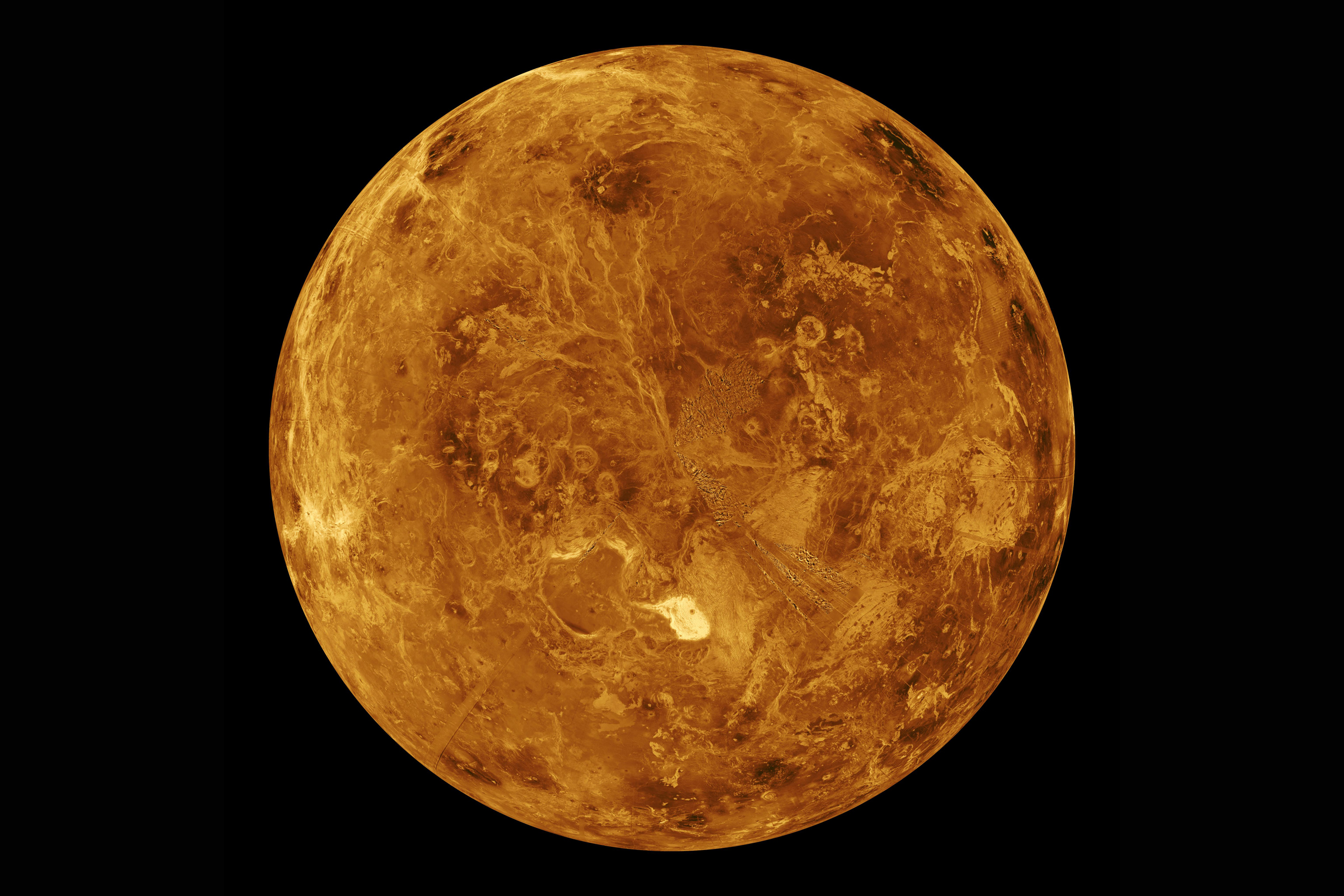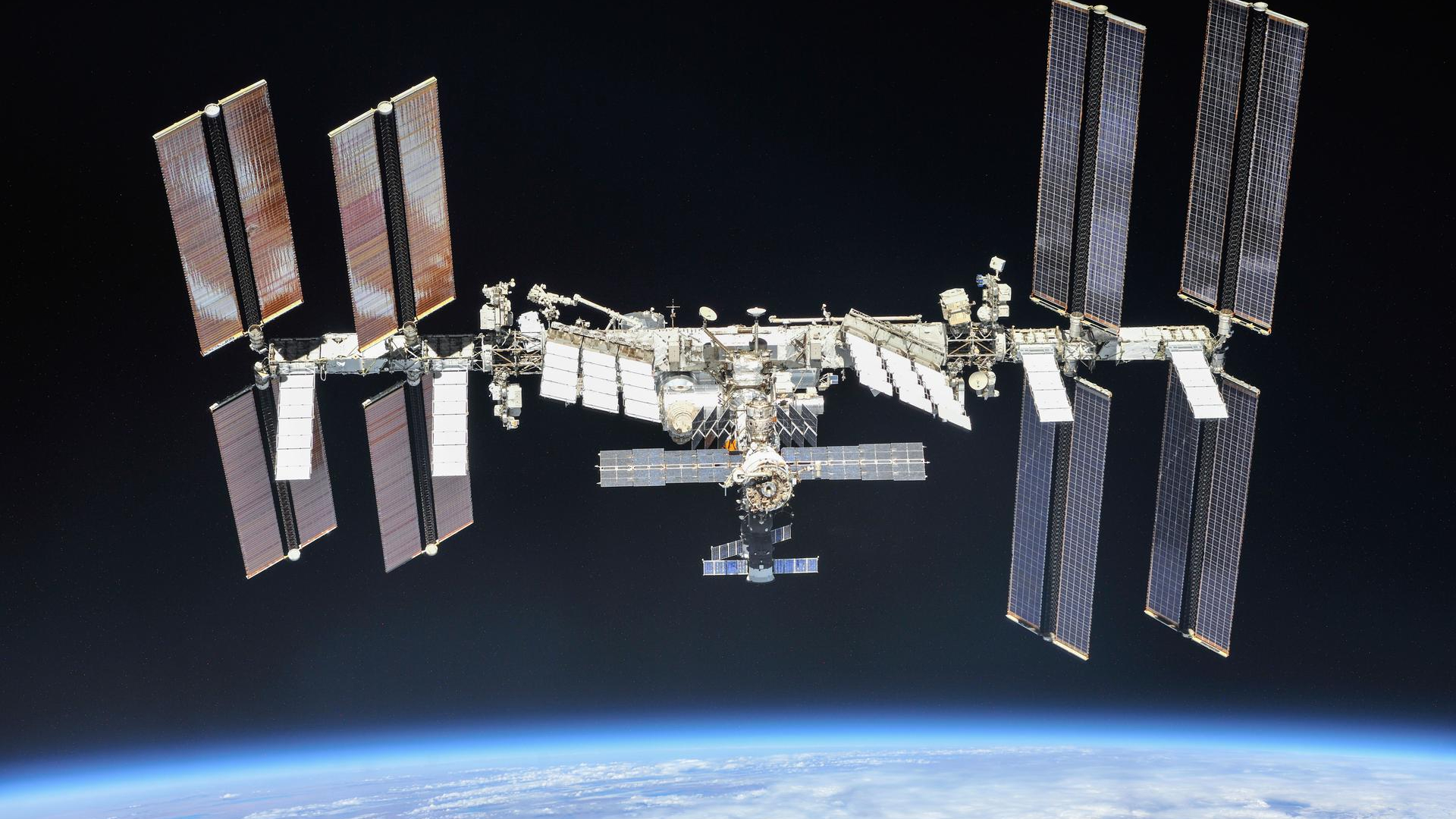Venus Gets Weirder: CO2 Oceans May Have Covered Surface

Venus may have once possessed strange oceans of carbon dioxide fluid that helped shape the planet's surface, researchers say.
Venus is often described as Earth's twin planet because it is the world closest to Earth in size, mass, distance and chemical makeup. However, whereas Earth is a haven for life, Venusis typically described as hellish, with a crushing atmosphere and clouds of corrosive sulfuric acid floating over a rocky desert surface hot enough to melt lead.
Although Venus is currently unbearably hot and dry, it might have once had oceans like Earth. Prior research suggested that Venus possessed enough water in its atmosphere in the past to cover the entire planet in an ocean about 80 feet deep (25 meters) — if all that water could somehow fall down as rain. But the planet was probably too warm for such water to cool down and precipitate, even if the planet did have enough moisture. [The Weirdest Facts About Venus]
Instead of seas of water, then, scientists now suggest that Venus might have once possessed bizarre oceans of carbon dioxide fluid.
Carbon dioxide is common on Venus.
"Presently, the atmosphere of Venus is mostly carbon dioxide, 96.5 percent by volume," said lead study author Dima Bolmatov, a theoretical physicist at Cornell University in Ithaca, New York..
Most familiar on Earth as a greenhouse gas that traps heat, helping warm the planet, carbon dioxide is exhaled by animals and used by plants in photosynthesis. While the substance can exist as a solid, liquid and gas, past a critical point of combined temperature and pressure, carbon dioxide can enter a "supercritical" state. Such a supercritical fluid can have properties of both liquids and gases. For example, it can dissolve materials like a liquid, but flow like a gas.
Get the Space.com Newsletter
Breaking space news, the latest updates on rocket launches, skywatching events and more!
To see what the effects of supercritical carbon dioxideon Venus might be, Bolmatov and his colleagues investigated the unusual properties of supercritical matter. A great deal remains uncertain about such substances, he said.
Scientists had generally thought the physical properties of supercritical fluids changed gradually with pressure and temperature. However, in computer simulations of molecular activity, Bolmatov and his colleagues found that supercritical matter could shift dramatically from gaslike to liquidlike properties.
The atmospheric pressure on the surface of Venus is currently more than 90 times that of Earth, but in the early days of the planet, Venus' surface pressure could have been dozens of times greater. This could have lasted over a relatively long time period of 100 million to 200 million years. Under such conditions, supercritical carbon dioxide with liquidlike behavior might have formed, Bolmatov said.
"This in turn makes it plausible that geological features on Venus like rift valleys, riverlike beds, and plains are the fingerprints of near-surface activity of liquidlike supercritical carbon dioxide," Bolmatov told Space.com.
The researchers found that depending on the pressure and temperature, clusters of gas-like supercritical carbon dioxide [Michael D1] might have formed in this supercritical carbon dioxide on Venus that "looked like soap bubbles," Bolmatov said. "A bubble of gas that is covered by a thick layer of liquid."
Bolmatov and his colleagues said they now hope to conduct experiments to detect this shift from gaslike to liquidlike properties in supercritical carbon dioxide. The scientists detailed their findings in the Aug. 21 issue of the Journal of Physical Chemistry Letters.
Follow us @Spacedotcom, Facebook and Google+. Original article on Space.com.
Join our Space Forums to keep talking space on the latest missions, night sky and more! And if you have a news tip, correction or comment, let us know at: community@space.com.

Charles Q. Choi is a contributing writer for Space.com and Live Science. He covers all things human origins and astronomy as well as physics, animals and general science topics. Charles has a Master of Arts degree from the University of Missouri-Columbia, School of Journalism and a Bachelor of Arts degree from the University of South Florida. Charles has visited every continent on Earth, drinking rancid yak butter tea in Lhasa, snorkeling with sea lions in the Galapagos and even climbing an iceberg in Antarctica. Visit him at http://www.sciwriter.us
